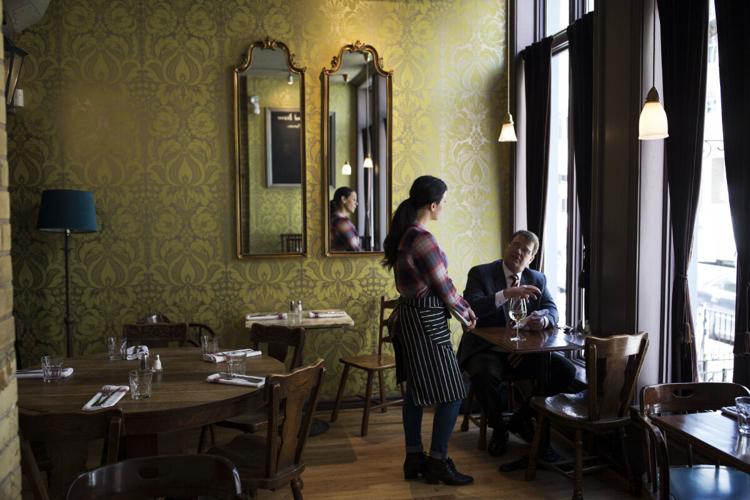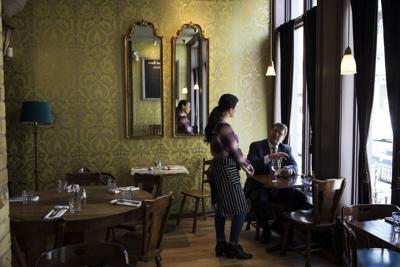This Motherâs Day there is no high tea at the King Edward Hotel nor The Four Seasons. There is, however, afternoon tea with the pots of Earl Grey and delicate little cakes. The two terms are often used interchangeably, but high and afternoon teas are completely different meals. Depending on appetites and whether youâre more of a sweet or savoury person, you might actually ditch afternoon tea and have your mom over for high tea.
High tea is a more substantial, after-work meal, historically associated with the working class. âHigh tea is bulky mugs and not bringing out your finest china,â says Sonya Singh, Fairmont Royal Yorkâs marketing manager and tea expert (sheâs preparing to take her tea sommelier exam). âIf you think of high tea, think of it as a meal with eggs, chicken, fish, meat pies, things that will make a fuller meal. Afternoon tea is more of a social event while with high tea youâre just trying to get a meal in.â

A corn beef pie, with corn brisket, potatoes cooked in cream and buttered cabbage with a scent of bacon prepared by head chef Duncan Simplson at The Queen and Beaver restaurant on Elm Street, in Toronto.
Melissa RenwickâHigh tea is like the savoury brother of afternoon tea,â adds Fabrizio Russo, food and beverage manager at , a lavish centuries-old London hotel. The hotel recently added high tea service in addition to their already popular afternoon tea, albeit with the panache one would expect from a hotel literally around the corner from Kensington Palace. The meal starts with an amuse bouche of chicken noodle soup thatâs more of a consommĂ©; followed by salmon en croĂ»te and welsh rabbit; sweet and savoury scones flavoured with cheese, bacon, truffle butter; and some sweet cakes.

A traditional ploughman’s platter, which is an assortment of meat, cheese and pickled items, prepared by head chef Duncan Simpson at The Queen and Beaver restaurant on Elm Street, in Toronto.
Melissa RenwickOf course, high tea was not as fancy as The Milestoneâs interpretation. High tea emerged around the time of the Industrial Revolution from the mid-18th century, Russo says. Workers were famished after a long day at the factories and their supper would be called high tea, typically eaten in the late afternoon early evening.
Afternoon tea, on the other hand, is a light afternoon meal that came out of the mid-1800s to keep the upper class satiated between breakfast and dinner (Anna Russell, the Duchess of Bedford, is widely credited with being the first to throw caution to the wind and consume cake and tea when she darn well wanted it). In the U.K. there was also âdinner,â a more formal meal than high tea that occurs in the in the late evening among the upper class. âIt was a different time. Literally,â says Russo. âThe times determined what social class you were a part of. High tea is between 4 and 5 oâclock and dinner would be 8.â

The Queen and Beaver’s mussels on toast is appropriate for high tea.
Melissa RenwickAs centuries passed, the idea of high tea fell out of fashion. The rise of restaurants and fast food allowed people to enjoy dinner anytime, anywhere. Employees now work well past 4 p.m. making it impractical to duck out for high tea. The novelty of afternoon tea struck, however, as hotels continue the tradition to let diners feel like royalty for the day.
Still, the high tea term stuck, says Singh, because people mistakenly associate the âhighâ moniker with âhigh societyâ or that youâre supposed to stick your pinky finger high in the air when holding a teacup (donât do that, itâs rude). The roots of the phrase âhigh teaâ are more literal than that.
âThe word high tea also stands for the high tables as well,â says Russo. âBefore going home, workers would take high tea in what was the equivalent of the fish and chip shops back then â the pie, liquor and mash shops. Those shops wanted to pack as many people into it, so chairs were almost non-existent and you had people standing at high tables while they ate.â
In the event that Torontonians canât fly across the pond to partake in The Milestoneâs new high tea service, British gastropubs and actually serve what workers would have eaten at high tea. The Queen and Beaver has a separate supper menu with dishes like chicken soup, pork chop and dumplings and corned beef and potato pie. Owner and British expat Jamieson Kerr says high tea wasnât observed at his household growing up per se, but supper was a daily ritual.
âMy father was an extremely good cook. Heâd cook things like a slow-cooked minced meat in a gravy with mashed or baked potatoes with peas, shepherdâs pie, cottage pies, a lot of things on toast like baked beans, tomatoes and eggs,â he says. âMy dad would be home at 5:30 p.m. and whip something up for 6.â
For him, supper meant quick bites and a lot of things on toasts: beans, sausages, tomatoes and eggs, and mashed banana with Nutella with sugar sprinkled on top (his kids loves that one).
So this Motherâs Day, ask your mom what she really wants. Some might go for the champagne and macarons but others would probably love you more for roast beef and pudding.































To join the conversation set a first and last name in your user profile.
Sign in or register for free to join the Conversation